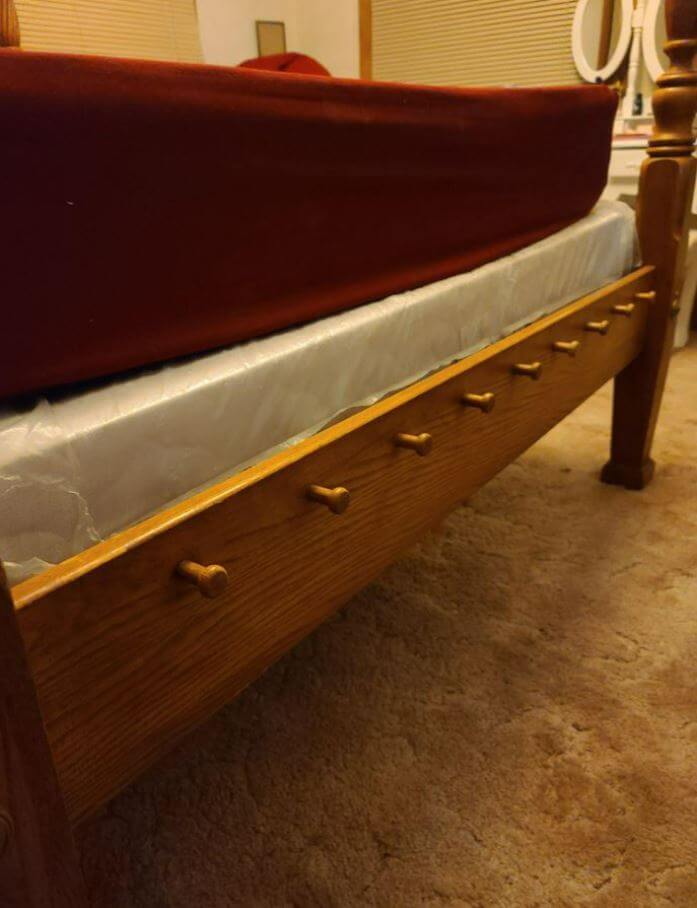Imagine coming home exhausted, ready to crash, only to discover your “bed” isn’t a cushy mattress at all—but a grid of ropes stretched across a wooden frame. Sounds bizarre today, but for people centuries ago, this was completely normal. I remember spotting one in the back of a dusty antique shop, thinking it belonged on a medieval stage. But once the shopkeeper explained how it worked, everything clicked.
The First Real Bed Support System
Long before coils, foam, or high-tech sleep gadgets, comfort came down to simple tools: a sturdy frame, tightly woven ropes, and a straw or down-filled mattress tossed on top. It may sound primitive, but it was surprisingly effective. The catch? Ropes loosen. Sometimes in just a few nights—especially if a kid jumped on the bed—you’d suddenly be sinking into the middle like a hammock. That’s where those strange wooden pegs came in. You’d slip them into the holes along the bed frame, twist them to tighten the ropes, and instantly bring the bed back to a firm, supportive surface. It’s actually where the phrase “sleep tight” came from—quite literally tightening your bed before turning in.

Daily Upkeep, Old-School Style
Back then, you didn’t toss things out when they sagged or wore down. You fixed them. Rope beds stretched over time, so tightening them became a regular chore—just part of keeping your home in shape. People took pride in maintaining their belongings instead of replacing them.
Crafted by Local Hands, Not Factories
These beds weren’t mass-produced. Local carpenters built the wooden frames and carved the pegs by hand. The same person who built your barn or mended your fence likely made your bed too. Repairs were simple, replacements weren’t often needed, and the whole thing could be passed down through generations.

You Still See Them Today
Rope beds haven’t completely disappeared. You’ll find them in historic inns, old farmhouses, and even in the occasional guest room of someone who loves antiques. Many are restored for display, but plenty remain functional. The craftsmanship has held up so well that people still trust them to support a good night’s sleep. Whenever I come across one, I can’t resist gently tugging the ropes—after asking permission, of course. It always makes me wonder why more modern designs don’t borrow from such clever simplicity.

A Simple Build with Surprisingly Smart Engineering
At the end of the day, it all came down to wood, rope, and a handful of pegs. Nothing complicated. No electricity. No plastic. Just a practical solution to keep a mattress from sagging. Back then, “sleep tight” wasn’t a cute bedtime phrase—it was literal instructions for ensuring a comfortable night’s rest.
If you’ve ever noticed old beds with odd pegs and wondered what they were for, now you know—they were part of a brilliantly simple system that kept people sleeping comfortably long before memory foam and springs ever existed.
